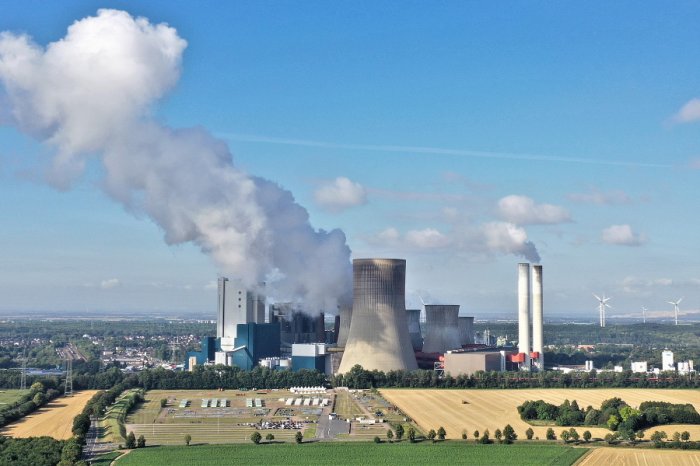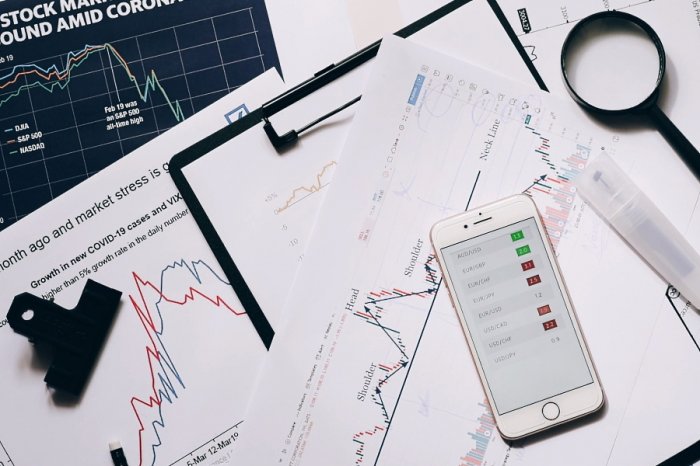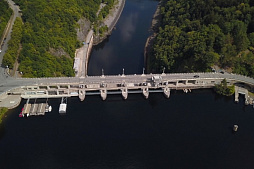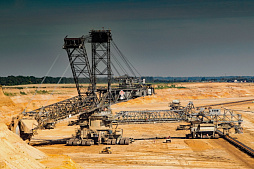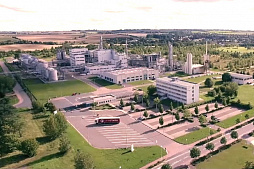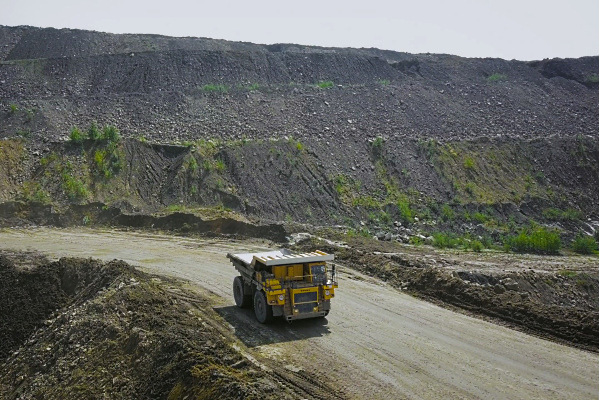To consider an application for financing, fill out the form and send it to us by e-mail along with the project brief, or contact our experts
Large international companies such as BHP, Glencore or Rio Tinto can use the huge cash flows from existing facilities to invest in the construction of new mines, quarries and processing plants.
Smaller-scale companies are firmly tied in their development to long-term debt financing instruments, such as investment loans, leasing, project finance.
Industrial Info counted more than 13 thousand investment projects in the mining industry as of the end of 2020.
The total investment value of these projects amounted to almost 1.2 trillion US dollars, which allows us to judge the scale of financing of the global mining sector.
Long-term factors such as population growth, urbanization, scientific progress and electrification in developing countries will continue to drive demand for metals and minerals in the coming years.
Global mining industry: investments and prospects
The influence of the modern mining sector on the world economy has greatly increased over the past decades.By 2020, it has risen to the 5th place in the ranking of the most powerful industries after IT, the pharmaceutical industry, the oil and gas and banking sectors, although in 2005 it ranked only 24th among the global sectors of the world economy in terms of capitalization. This is easy to explain because no production can develop without appropriate investment in the mining industry.
Since 2017, the mining sector has continued to increase capital spending after peak metal prices.
The favorable investment environment was destroyed by the pandemic.
In 2020, capital spending of mining companies decreased by 3% compared to the previous year. The situation varied depending on the sector. Against the background of high gold prices in 2020, the global market has seen more than 2,000 gold mine projects with a total investment of $170 billion.
According to the Engineering & Mining Journal, as of the end of 2020, more than 1,600 steel and mining projects worth hundreds of billions were affected by the pandemic. Later, the situation was affected by the uncertainty associated with the war in Europe and the rise in fuel prices.
Mining in general is heavily impacted by the projected slowdown in global GDP growth, an important indicator for planning capital spending in this sector.
The International Monetary Fund (IMF) predicts a decline in GDP growth rates in 2023 from 3.6% to 2.9%, and this forecast looks uncertain, especially against the background of geopolitical instability and risks.
Table: The largest mining investment projects of various types (2020)
| Project name | Country (location) | Owner company | Project cost |
| Iron ore | |||
| Simandou Blocks 1 & 2 | Guinea | SMB Winning | $16 billion |
| Simandou North | Guinea | Rio Tinto & Baowu | $10 billion |
| Jack Hills Expansion Project (magnetite) | Australia | Sinosteel | $6.9 billion |
| Balmoral South Project | Australia | Mineralogy | $4 billion |
| Southdown | Australia | Grange Resources | $2.9 billion |
| Copper ore | |||
| Baimskaya Copper Project | Russian Federation | KAZ Minerals | $8 billion |
| Resolution Copper Mine Project | USA | BHP & Rio Tinto | $6 billion |
| Tampakan Copper-Gold Mine | Philippines | Sagittarius | $5.9 billion |
| Zinc & lead | |||
| Izok Corridor Project | Canada | MMG | $2.5 billion |
| Admiral Bay Zinc Project | Australia | Metalicity | $0.8 billion |
| Hilarion zinc mine | Peru | Nexa Resources | $0.6 billion |
| Nickel ore | |||
| Wingellina Nickel-Cobalt Project | Australia | Metals X | $2.5 billion |
| Decar Nickel-Iron Alloy Project | Canada | FPX Nickel | $1.7 billion |
| Sunrise Nickel Cobalt Scandium Project | Australia | Clean TeQ | $1.3 billion |
| Gold ore | |||
| Donlin Gold | USA | Barrick & NovaGold | $6.7 billion |
| Norte Abierto gold and copper mine project | Chile | Barrick & Newmont | $6 billion |
| Galore Creek | Canada | Newmont | $5.2 billion |
| KSM copper-gold project | Canada | Seabridge Gold | $5.2 billion |
| Sukhoi Log | Russian Federation | Polyus | $3.3 billion |
| Platinum-Group Metals | |||
| Darwendale Platinum Project | Zimbabwe | Great Dyke | $2 billion |
| Platreef PGM Project | South Africa | Ivanplats | $1.4 billion |
| Waterberg PGM Project | South Africa | Platinum Group Metals | $0.9 billion |
| Diamonds | |||
| Venetia Project | South Africa | De Beers | $2.1 billion |
| Jwaneng Mine Cut 9 Project | Botswana | Debswana | $2 billion |
| Star Orion | Canada | Star Diamond | $1.4 billion |
| Uranium | |||
| Patterson Lake South | Canada | Fission Uranium | $1.5 billion |
| Arrow Project | Canada | NaxGen | $1.2 billion |
Financing of the mining industry is still considered the prerogative of developed world, since most countries only have a few weak sub-sectors, and sometimes extract minerals without processing, thus leaving local business without a significant share of added value.
Many countries of Africa, Asia and Latin America are still highly dependent on foreign investment.
Moreover, no country in the world has a full range of mineral deposits. Only 10 from the list of countries that are leaders in the import of minerals can extract about 35 types of mineral products. Among them are Canada, South Africa, India, Brazil, Australia, USA, China and Russia. However, in terms of financing and development of this industry, the PRC retains its unchanging leadership.
Not surprisingly, most of the largest mining companies belong to the countries listed above. As of the 3rd quarter of 2022, this list was headed by such mining giants as BHP Group (Australia), Rio Tinto (Australia), Glencore (Switzerland), Vale (Brazil), Norilsk Nickel (Russia), Anglo American (UK), Newmont Goldcorp (USA) and others.
By the way, at the end of March 2022, the total value of the top 50 mining companies in the world will reach 1.75 trillion dollars.
In addition to large companies, of which there are more than 6,000 in the world, mining industry includes a huge number of small and medium enterprises. The development of this sector is critically important not only for the state, but also for investors, contractors, suppliers, service companies, local communities and consumers.
Given the strategic importance of the sector, high profits and huge capital requirements, modern mining is extremely attractive as an investment. This sector actively uses long-term loans, project finance, leasing and other financing instruments provided by commercial banks, investment funds, national governments and international financial institutions.
Almost all the world's largest banks and world-famous investment funds are involved in mining industry financing in one way or another.
This applies not only to the extraction of iron ore, gold, polymetallic ores and uranium, but also to thermal coal projects.
A brief history of the mining sector and its capital needs
Modern mining industry is a complex of capital-intensive sectors in the field of extraction and beneficiation of such minerals as base metals (polymetallic, copper, lead, aluminum ores), precious metals, iron, uranium ores, coal, diamonds, limestone, potash, graphite, asbestos, clay, other mineral building materials.But it has gone a long way of evolution to its modern appearance.
Extraction and processing of mineral resources have the same ancient history as the development of mankind. The development of the mining industry and the location of its branches are determined by natural and socio-economic factors. All centers of development of human civilization, including ancient China, Egypt, Persia and Greece, have signs of extraction and use of mineral resources.
The financing of mines and quarries dates back to ancient times and includes examples of the use of long-term loans and the simplest investment instruments.
For example, archeological findings in ancient Greece contain clear evidence of the use of agreements similar to modern lease financing of the mining industry at least as far back as the 4th century BC.
The mining industry as a separate industry began to form in the 16th-18th centuries on the basis of the expansion of medieval crafts, when artisanal miners were transformed into hired workers and the first mining and metallurgical manufactories appeared. At the same time, the technologies of extraction and processing of minerals were improved, which significantly increased the capital needs of mining projects.
The industrial revolution of the end of the 18th and beginning of the 19th centuries stimulated the increase of investments in the extraction of mineral raw materials, and until the second half of the 19th century such raw materials were only solid minerals.
With the development of metallurgy in that period, the demand for ore and hard coal for burning coke increased sharply.
This period is characterized by the growth of more effective forms of financing mining projects, in which the largest banks and governments of leading countries actively participated.
The huge scale of mineral extraction was observed at the turn of the 19th and 20th centuries, during the period of rapid development of industrialized countries.
The predominance of certain types of energy raw materials in the world capitalist economy caused changes in the structure of the mining industry. In the 20th century financing of oil and gas production began to develop rapidly.
The concentration of capital in the mining industry has increased dramatically, and large mining monopolies have been created in the leading industrial countries.
Significant changes also affected the technologies of mineral extraction. At the beginning of the 20th century mining methods dominated in developed countries, but with the spread of the mining industry in developing countries, open methods of developing deposits (quarries) began to prevail.
The high profits of the mining industry contributed to the expansion of the production of various types of equipment, and also greatly influenced the development of the metalworking industry. In this way, mining contributed to the creation of fundamental sectors of the economy.
Large mining projects involve infrastructure that is later used by other sectors of the economy, as can be illustrated by the examples of countries such as Chile and Peru.
Uneven placement of mineral deposits and mining industry facilities in different regions led to varying degrees of self-sufficiency in mineral raw materials, fossil fuels, and their processing products. This led to the development of active international trade. Mineral raw materials still occupy a prominent place in terms of tonnage in world trade, and investments in seaports and terminals are largely dictated by the mineral trade.
The most attractive countries for financing mining projects
The world markets of raw materials and investment projects in the mining industry are clearly divided between several major players, and the most attractive segments are characterized by high competition. Globalization of the metallurgical and mineral market has become a reality.The main trends in the development of the globalized mineral market are listed below:
1. The majority of industrialized countries are gradually displacing mineral extraction and processing enterprises from their territories, focusing on imports. Australia, South Africa and to a lesser extent Canada are still exceptions to this rule.
2. The world market of almost all types of mineral raw materials is currently saturated, and producers from industrialized countries, who are able to influence the trade policy of their states, are not interested in the appearance of new suppliers.
3. Extraction and processing of mineral raw materials have always been risky areas of capital investment with a long payback period. Because of this, corporations seek to minimize risk and develop deposits in countries with a predictable economy and a stable political regime.
4. More and more developing countries are taking a course to develop the mining sector thanks to foreign investors. On the one hand, it gives large corporations the opportunity to choose the best objects for investment. On the other hand, this leads to a gradual decrease in world prices for most types of metals and minerals (mainly due to savings on labor costs).
5. The trend of the world market in recent years has made oil, gas, non-ferrous metals, gold, platinum group metals, diamonds and uranium the most profitable. This predetermined the list of the most attractive countries for investment in the mining sector.
The ranking of countries for mining projects development projects is headed by China, Australia, India, and Canada. This list also includes the United States, Brazil, Argentina, Chile and others. International companies and banks are increasingly paying attention to the financing of mining projects in Africa, including South Africa, Congo, Mozambique, Namibia and Ghana.
Table: Best and worst jurisdictions for mining investment (Fraser Institute, 2021).
| # | The best regions | The worst regions |
| 1 | Western Australia | Zimbabwe |
| 2 | Saskatchewan (Canada) | Spain |
| 3 | Nevada (USA) | Democratic Republic of Congo |
| 4 | Alaska (USA) | Mali |
| 5 | Arizona (USA) | Nicaragua |
| 6 | Quebec (Canada) | China |
| 7 | Idaho (USA) | Panama |
| 8 | Morocco | Mendoza (Argentina) |
| 9 | Yukon (Canada) | Venezuela |
| 10 | South Australia | South Africa |
| 11 | Utah (USA) | Kyrgyzstan |
| 12 | Ontario (Canada) | Chubut (Argentina) |
| 13 | Finland | New Zealand |
| 14 | Northern Territory (Australia) | Nova Scotia (Canada) |
| 15 | Republic of Ireland | Bolivia |
| 16 | British Columbia (Canada) | Guyana |
| 17 | Sweden | Niger |
| 18 | Queensland (Australia) | Tanzania |
| 19 | Tasmania (Australia) | Botswana |
| 20 | Colorado (USA) | Kazakhstan |
In the European Union, despite the declining role of the mining industry in the economy, many minerals are still extracted on an industrial scale.
In the countries of Northern Europe, polymetallic ores have been mined for centuries and today they dominate the lists of investment projects in the European mining sector. While mining is drifting from the West to developing countries, ore smelting and beneficiation capacities remain high in the EU and the USA.
However, the balance is beginning to shift with the financing of copper and aluminum production in China. The mining industry is now highly dependent on the actions of large developing countries (mostly China as the main consumer). In recent decades, the demand for minerals has increased in Brazil and India, which has contributed to new investments in iron mining.
A couple of decades ago, mining companies invested hundreds of millions of dollars to evaluate the geological and technical aspects of developing mining projects.
But they spent significantly less time and resources on the appropriate assessment of political, social and economic factors and the specifics of the development of those countries where their projects operate.
Guaranteeing safe access to highly liquid and profitable assets in the long term is a key factor in ensuring the growth of companies' value for their shareholders. Therefore, the needs of local economic development are turning into a central issue of corporate strategy, which is why mining companies today try to take into account the main characteristics of host countries in their activities.
One of the most important issues is the territory of the country and, accordingly, the relative importance of resource extraction for the national economy.
In countries with a large area and low population, such as Kazakhstan and Russia, the mining industry is much more important for economic development than in densely populated countries with more diversified economies.
Another important issue is the level of economic development. A country with a less developed economy tends to rely more on extractive industries due to limited sources of tax revenue. Such countries usually expect private companies to play a more active role in economic development, particularly in financing capital-intensive mining projects.
Investments in the modernization of mining facilities, quarries and mines
The current state of the global mining industry can be called the beginning of a new era of sustainable development.However, costs are increasing due to stricter environmental standards and a lack of skilled workers.
Moreover, companies have to finance the development of deposits with diminishing and low-quality mineral reserves, and the construction of mines and quarries becomes increasingly expensive as mining sites become more complex and located far from major cities.
Mining companies are revising their business plans, but the need for investment remains very high, including the need to finance the modernization of mining enterprises. Companies are quickly adapting to high energy and fuel prices by making their facilities more efficient and spending heavily to reduce energy and fuel costs. Remote control of mining processes, automation and digitization are also receiving a lot of attention after the pandemic.
Experts are still optimistic about the future growth of investments in the mining industry, but risks are always there.
For a more efficient operation of a mining company at this stage, it is important to consider the modernization of existing proven facilities instead of building completely new ones.
The need for mineral products is constantly growing, which leads to the use of increasingly poorer raw materials, an increase in the volume of processed mining mass, and the depth of mining operations, which require the improvement of mining methods and processing technology.
Interesting fact: in 2021, there were more than 1,900 projects for the construction of new mining facilities of various types and almost 3,100 investment projects for the expansion / modernization of existing mines, quarries, and mining processing plants around the world.
New investment projects in the mining industry are larger, more expensive and riskier. New mines and quarries are more built in undeveloped regions, with environmental problems, complex in the geological sense and logistically inconvenient. Operational disruptions and unexpected changes in financial regulations can have a significant impact on sensitive and capital-intensive projects.
In recent years, the depth of active oil productive wells has increased to 6 km or more.
In the USA alone, more than 10,000 exploratory wells with a total length of 19–20 million meters are drilled annually.
At the same time, hundreds of wells are drilled to a depth of more than 5 km, and some to a depth of 9 km; the cost of drilling one deep or ultra-deep well reaches several million dollars.
The scale of construction of special drilling platforms and vessels for geological exploration, oil and gas production is also increasing. To increase the oil recovery rate, secondary, and in some cases, tertiary methods of oil production are widely used. Modern technologies of primary processing or beneficiarion of mineral, metallic and non-metallic raw materials have significantly raised the level of efficiency, but they require significant financing and long-term investments.
The ratio of income and expenses differs at each stage of the life cycle of a mining project.
For example, direct labor costs are highest in the early stages of mine construction, and it takes time to generate most of the financial returns.
The need to improve production and modernize mining projects is dictated by the fact that new deposits mostly have a small content of useful components and a more complex mineral composition than it was 10-15 years ago.
This is typical for metals such as copper.
As a result, prices rise, and poor fields are not developed until prices are high enough to cover such costs or new, cheaper mining technologies become available.
Investments in the modernization of the mining industry are increasing every decade.
This process is supported by scientific progress, growing competition, environmental protection measures, limited areas for new mineral exploration, and the increase in the cost of fuel and energy.
Link Bridge Financial LTDA LBFL is always ready to provide long-term financing for mining companies anywhere in the world. Having access to advanced financial engineering tools, our specialists develop customized solutions for each client, implementing ambitious projects thanks to close partnerships with well-known banks and financial institutions in Europe and beyond.
Contact us for a consultation.




